Why urea fertilizer has the highest global production and consumption
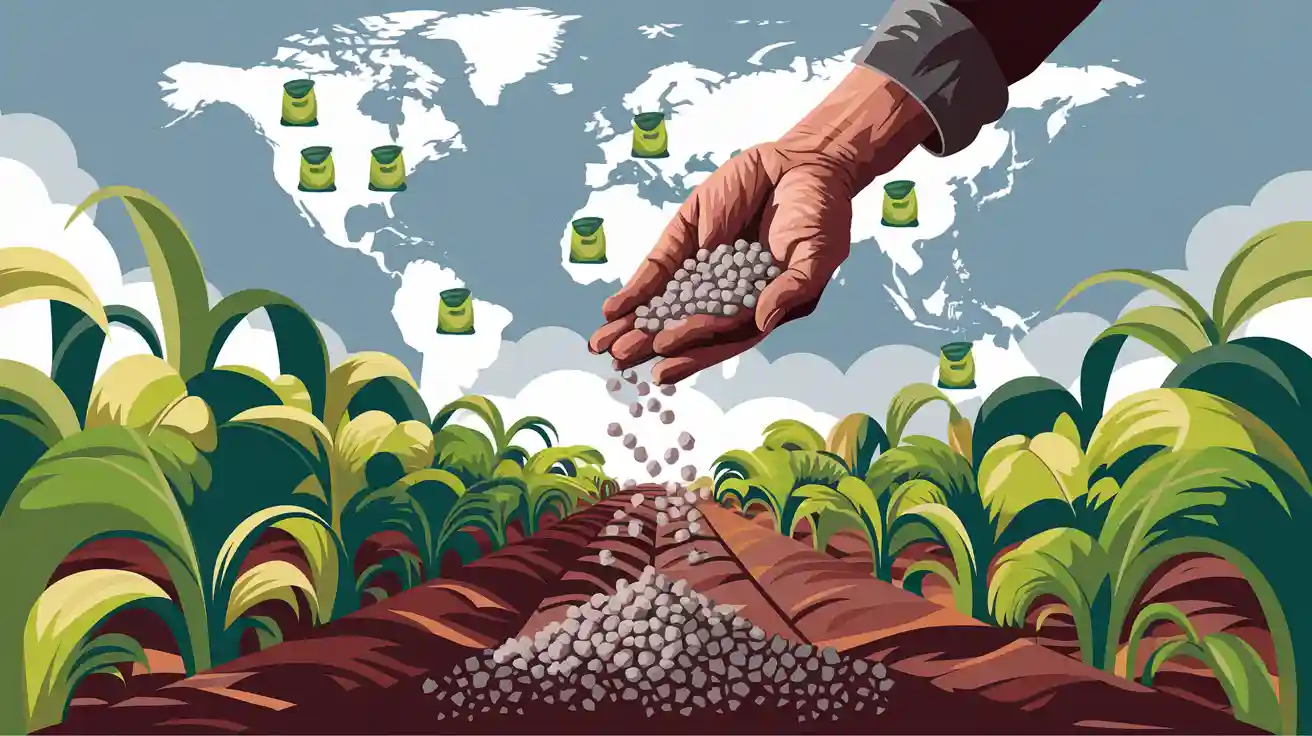
Urea fertilizer is the top choice for farmers all over the world. It has a lot of n, is cheap, and can be used in many ways. This makes it very important for growing more crops. Urea is not just low-cost. It mixes well with water, fits many soil types, and helps many crops. A Grand View Research report says urea made up over 33% of the world’s nitrogenous fertilizer market by money in 2021. Farmers and businesses who know the good things about urea fertilizer do better in food production.
Key Takeaways
Urea fertilizer has the most nitrogen at 46%. This helps crops grow better and make more food.
It is cheaper, so farmers get more nitrogen for each dollar. Other fertilizers do not give as much for the price.
Urea works in many soils and climates. Farmers can use it in different ways to fit what they need.
Asia, like Thailand, China, and India, makes and uses the most urea. This helps keep food safe for people.
Urea helps farmers grow more food on the same land. This is important as more people need food.
Special products like inhibitors and slow-release urea help stop nitrogen loss. These also help protect the environment.
New technology and cleaner ways to make urea help the planet. These make urea fertilizer better for nature.
Governments and farmers who use urea the right way get better crops. They also save money and help feed the world.
Urea Fertilizer Advantages
High Nitrogen Content
Crop Yield Impact
Urea fertilizer has more nitrogen than other fertilizers. It has about 46% nitrogen, which is a lot. Nitrogen helps plants grow and make chlorophyll. Chlorophyll is needed for photosynthesis. When farmers use urea, their crops get strong and healthy. The plants grow more leaves and have more protein. This makes the soil better and the plants stronger.
Farmers who use urea see their plants grow faster. They also get more crops at harvest. Crops can fight off pests and diseases better. They use water in a smarter way. Studies show liquid urea helps plants use more nitrogen. Less nitrogen is lost to the air or water. Good use of urea means better crops and more food for people.
Tip: Use the right amount of urea at the right time. This helps crops grow well and stops waste.
Comparison to Other Fertilizers
Urea has more nitrogen than most other fertilizers. Ammonium nitrate has about 33-34% nitrogen. Ammonium sulfate has only 20-21% nitrogen. Because urea is strong, farmers need less of it. This saves money on moving and storing fertilizer.
Fertilizer Type | Typical Nitrogen Content (%) |
|---|---|
Urea | 46 |
Ammonium Nitrate | 33-34 |
Calcium Ammonium Nitrate | 25-28 |
Ammonium Sulfate | 20-21 |
Urea is full of nutrients. That is why it is the top pick for growing more food around the world.
Cost-Effectiveness
Production and Affordability
Urea fertilizer gives good value for its price. In mid-2025, it cost $662 per ton. This is less than anhydrous ammonia but more than some liquids. But urea gives more nitrogen for each dollar spent. Its high nitrogen means farmers get more for their money.
Farmers in many places pick urea to save money. Prices can change because of energy costs and other things. Still, urea is a favorite. In South Dakota, 65% of farmers use urea most. Farmers change how they use urea based on weather and soil. This helps them save money and get better crops.
Note: Urea works best when managed well. Using urease inhibitors or applying before rain helps keep nitrogen in the soil.
Adaptability
Soil Compatibility
Urea works in many soils and climates. Its properties let it work in wet or dry places. Urea can release nitrogen slowly with special mixes. This keeps more nitrogen in the soil for longer. Slow release helps crops grow steady and lose less nitrogen.
Urea fits into many farming systems. It works in sandy, clay, or loamy soils. This makes it a good choice for farmers everywhere.
Application Versatility
Urea is easy to use in different ways. Farmers can spread it as granules before planting. They can also use it on top of growing plants. Urea dissolves well in water. It can be used in irrigation systems. Urea solutions are good for spraying on leaves.
Fertilizer Type | Nitrogen Content (%) | Solubility in Water | Application Versatility | Additional Notes |
|---|---|---|---|---|
Urea | 46 | High | Solid, liquid (fertigation), foliar spray | Needs careful timing to reduce nitrogen loss |
Ammonium Nitrate | 33-34 | High | Mainly soil application | Less volatile than urea |
Ammonium Sulfate | 21 | Moderate | Soil application | Adds sulfur to soil |
Calcium Ammonium Nitrate | 27 | Moderate | Soil application | Improves soil structure |
Farmers like urea because it is flexible. They can pick the best way to use it for their crops and soil. This helps them get more crops and better results each year.
Production
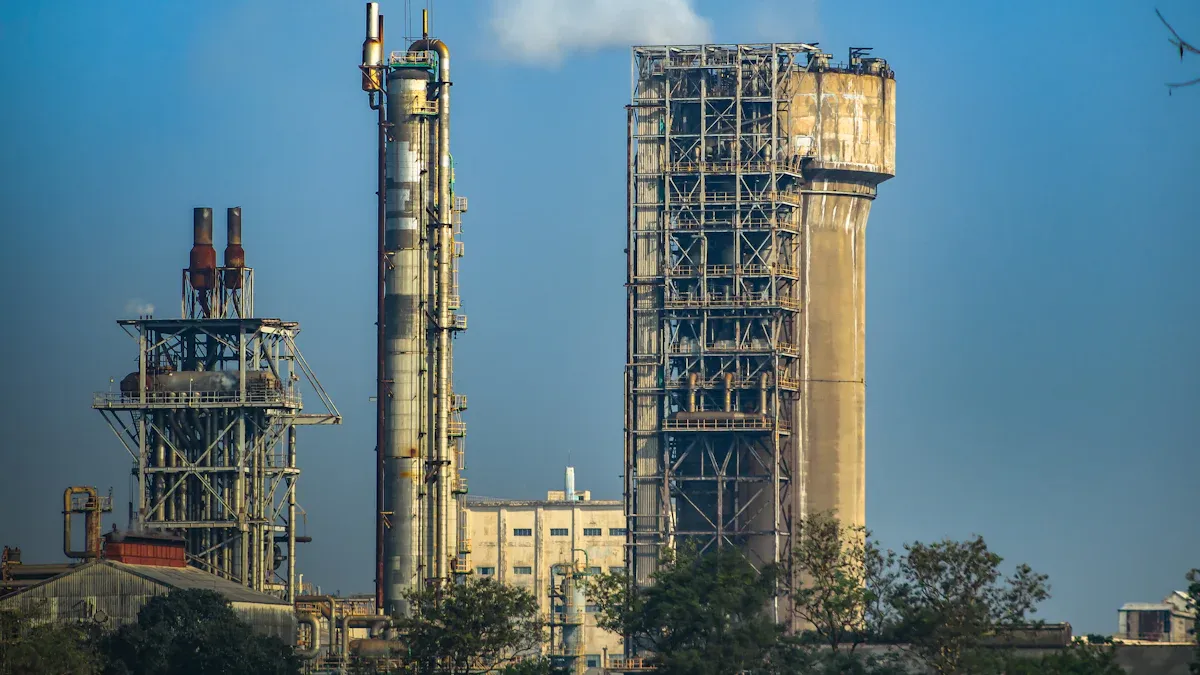
Major Producers
Asia
Asia makes more urea fertilizer than any other place. Thailand is the biggest producer. It uses lots of natural gas and new machines. China and India also make a lot of urea. China keeps most of its urea for its own people. India makes much urea but still buys more from other countries. Indonesia helps its own farmers and sells some urea to other places.
Rank | Country | Production Status and Notes |
|---|---|---|
1 | Thailand | World's largest producer of urea fertilizer, supported by abundant natural gas and advanced manufacturing. |
2 | China | Major global producer, large domestic consumption reduces export volume. |
3 | India | One of the top producers, but still imports to meet demand. |
9 | Indonesia | Key Southeast Asian producer, mostly for domestic use but also exports. |
These countries keep making urea by building new factories and using better tools. They know that making enough urea means more food and better crops.
Former Soviet Union
Russia is a leader in making urea in the old Soviet Union area. Russia has lots of natural gas to make urea fertilizer. Russia sends much of its urea to other countries. Uzbekistan and Kazakhstan also help, but Russia is the biggest.
Country | Export Volume (million metric tons, 2019) |
|---|---|
Russia | 6.975 |
Russia sells a lot of urea to other countries. This shows it is very important in the world market. Russia works hard to make and send out urea, helping farmers everywhere.
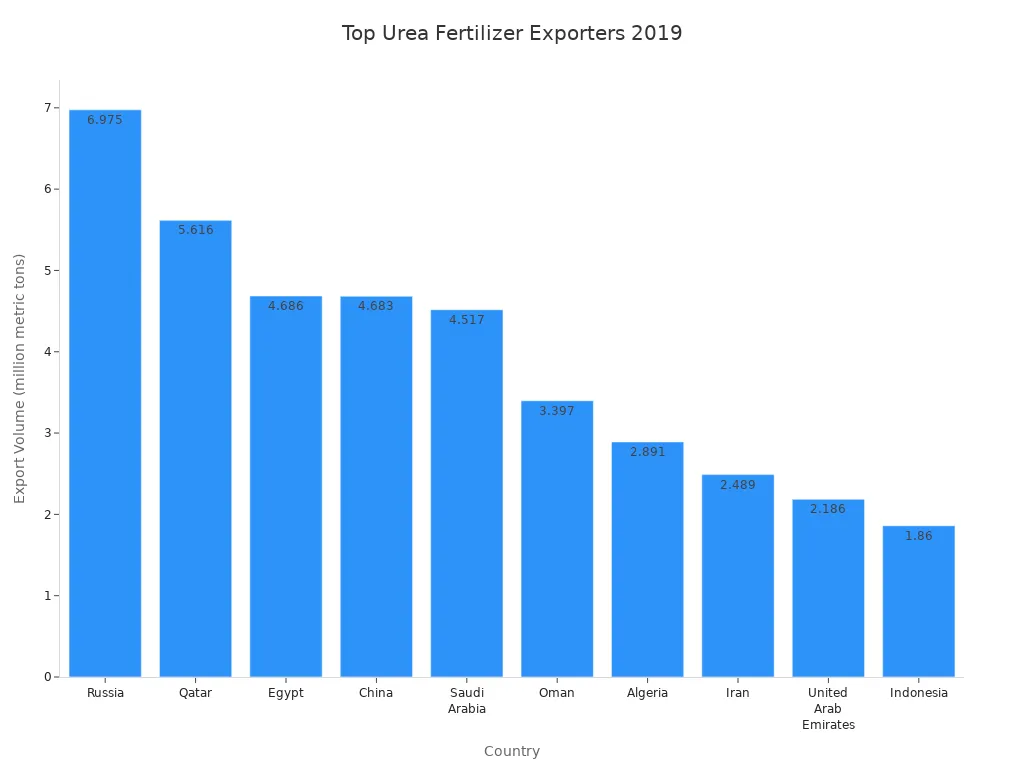
Industrial Scale
Manufacturing Capacity
Big urea factories need a few main things. Natural gas is the most important and costs the most. Countries like Russia, Qatar, and the United States have cheap natural gas. This helps them run big fertilizer factories. These factories use good machines and skilled workers to make lots of urea for less money.
Note: The price of natural gas can go up or down fast. This changes how much urea a factory can make and sell.
Supply Chain
A good supply chain moves urea from factories to farms. Rules for selling and buying, shipping, and storage all matter. Countries with good ports and roads can send urea to many places. Some countries have strict rules to protect nature. These rules can make it cost more or slow down making urea.
Important things for a good urea supply chain:
Easy access to raw materials
Good transport and storage
Clear rules for selling and buying
Smart use of new technology
Farmers and companies need this worldwide system. When the supply chain works well, they get urea when they need it.
Consumption
Leading Markets
China
China uses more urea than any other country. Its farms are very big and need lots of fertilizer. Farmers use urea to help rice, wheat, and corn grow better. This helps feed the huge number of people in China. The government gives money and support to help farmers buy urea. They want farmers to grow more crops. China also uses urea in diesel trucks to help clean the air. Because of this, China needs a lot of urea for both farms and factories.
India
India is the second biggest user of urea. Farmers in India use urea to grow rice and wheat. The government helps by making urea cheaper for all farmers. India wants to make more urea at home and buy less from other countries. This is part of the Aatmanirbhar Bharat plan. The fertilizer business in India keeps getting bigger. More people live in the countryside and more land is used for farming. This means India always needs a lot of urea. Food safety is very important, so urea stays a top choice for Indian farmers and leaders.
India and China together use most of the world’s urea. They help decide how much urea is needed everywhere.
Demand Drivers
Food Security
Many countries worry about having enough food. Urea fertilizer helps farmers grow more crops for more people. Governments in Asia, Africa, and Latin America give money to help farmers buy urea. This lets farmers use more fertilizer and get better harvests. In Europe, Germany, France, and Spain use a lot of urea and other nitrogen fertilizers. Germany uses more than Spain and Italy. This shows urea is important for food in rich countries too.
Urea has a lot of nitrogen (46%), so it is great for soil and crops.
Governments want farmers to use more urea, especially in poorer countries.
New ways of farming and better delivery help more farmers get urea.
Population Growth
More people means more food is needed. Countries in Asia-Pacific, Africa, and Latin America depend on farming. As more people are born, these places use more land and better ways to farm. Governments help by making urea cheaper, so more farmers can use it. The world could have 9.7 billion people by 2050. There is not much new land to farm, so farmers must grow more food on the same land. Urea helps them do this. This is why urea is the most used nitrogen fertilizer in the world.
Urea lets farmers grow more food without using more land. This makes it very important for feeding people in the future.
Urea in Global Agriculture
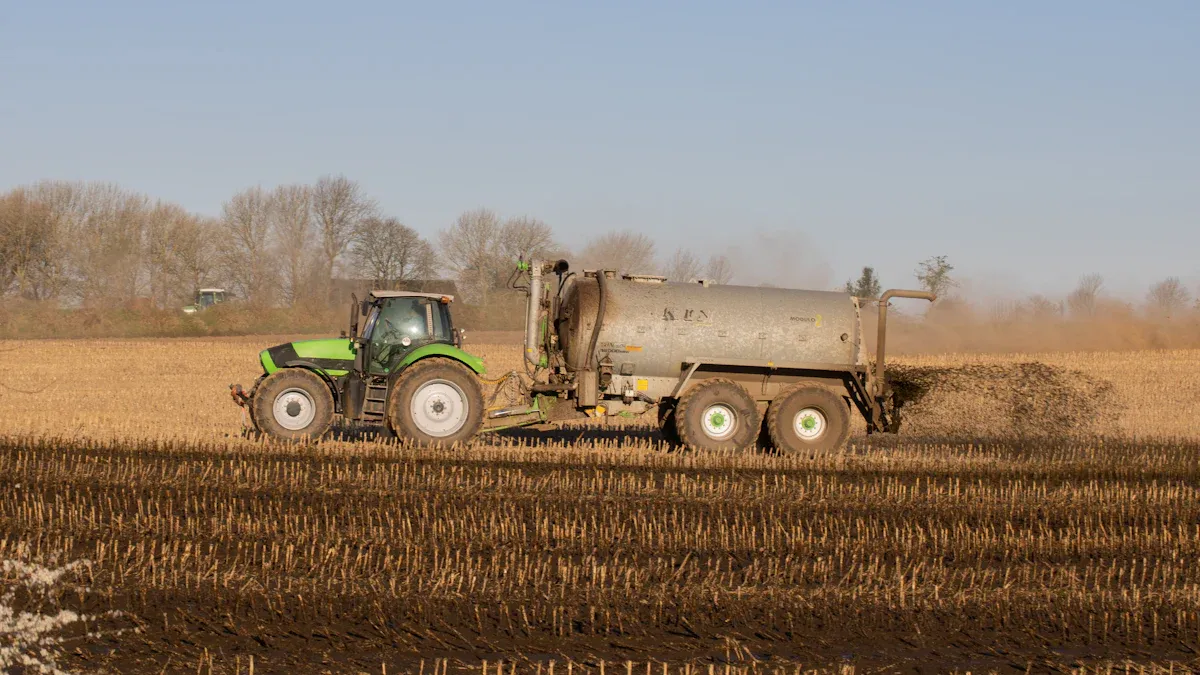
Role in Crop Productivity
Nitrogen Release
Urea fertilizer is a strong source of n for plants. Farmers like it because it has about 46% nitrogen. This is more than other common nitrogen fertilizers. When urea is put on soil, it breaks down fast. Plants take in the n quickly. This helps leaves grow and makes plants stronger. Plants also make more protein and have thicker stems. Because of this, farmers get more crops each year. Their fields stay good for growing.
Modern farms use new tools like satellites and IoT devices. These tools help farmers use the right amount of urea. They put it on at the best time. This cuts down on waste and helps the environment. Controlled-release urea lets plants use more nitrogen. In China’s Yangtze River Delta, farmers used both types of urea. They got more grain and made more money. Greenhouse gas emissions went down by over 35%. This shows that smart use of urea helps crops and the planet.
Support for Staple Crops
Urea is important for feeding people around the world. It helps staple crops like rice, wheat, and corn grow well. These crops are the main food in many countries. Urea lets farmers grow more food on the same land. This is very important as more people are born.
Urea helps crops grow by giving them needed n.
It lets farmers rotate crops and try new kinds.
Using urea in a smart way keeps soil healthy and stops nutrients from washing away.
Governments in India and China help farmers buy urea. This means even small farms can get the fertilizer they need. Rural areas get stronger and food is safer for everyone.
Market Growth
Expansion Trends
The world market for urea fertilizer keeps getting bigger. People need more food, so more urea is made. Over 180 million tonnes are produced every year. China makes and uses the most urea. It is about 30% of the total. Asia-Pacific has more than 60% of the world’s urea market. This is because cities are growing fast and governments help farmers.
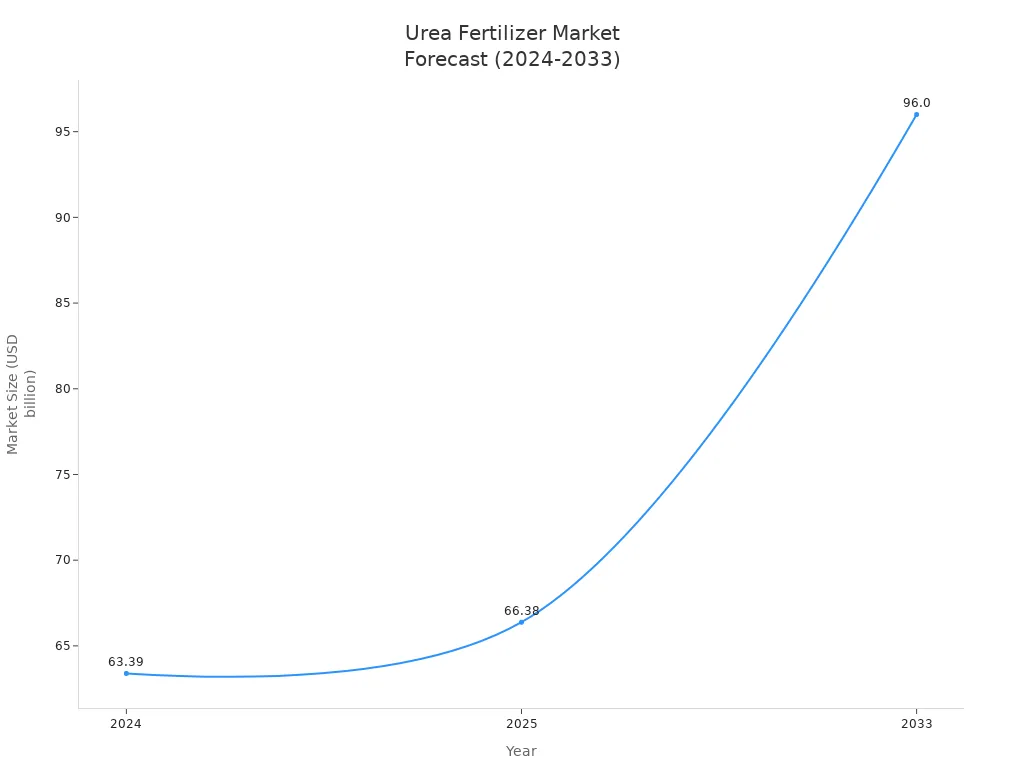
Big companies spend a lot of money on new urea plants. They build these in Brazil, the U.S., and Russia. This makes more urea and keeps prices steady. The market is also moving to greener ways of farming. People use bio-fertilizers and digital tools. New rules make companies use cleaner ways to make urea.
The world urea market was worth $55 billion in 2024. It could reach $75 billion by 2033.
The market grows because people need more food. New farm tools and government help also matter.
Problems include changing prices for raw materials and stricter rules for the environment.
Farmers and companies who use urea do better. They grow more crops, help keep food safe, and can change with the market.
Environmental Impact
Emissions
CO2 in Production
Urea is made in a way that saves energy. All nitrogen fertilizers, like urea and ammonium nitrate, start with ammonia. Making ammonia lets out carbon dioxide and methane. Every fertilizer adds to pollution, but where it is made matters. Some places use cleaner energy, so they pollute less. Urea makes up about 39% of all fertilizer pollution. But, making urea does not release as much CO2 as some others at the factory. Farmers and companies pick urea because it has lots of nitrogen and makes less pollution than some other choices.
Nitrogen Loss
When farmers use urea, some nitrogen escapes into the air. This happens fast in dry or alkaline soils. The process is called volatilization. It means less nitrogen gets to the plants. Using urea a lot can make soil more acidic. Too much nitrogen can leak into water underground. This can make water unsafe and pollute rivers and lakes. Ammonia gas from urea can hurt young plants. Urea also makes greenhouse gases, like nitrous oxide. Nitrous oxide warms the earth much more than carbon dioxide.
Environmental Concern | Description | Impact | Mitigation Suggestions |
|---|---|---|---|
Urea turns to ammonia gas fast, especially in dry soils. | Nitrogen is lost before plants use it, so farmers waste money. | Use stable nitrogen sources like liquid or water-soluble fertilizers to reduce loss. | |
Soil Acidification | Using urea a lot makes soil more acidic over time. | Acidic soil makes it hard for plants to get nutrients and hurts good microbes. | Use balanced nitrogen sources and water-soluble fertilizers with complementary nutrients. |
Groundwater Contamination | Extra nitrogen can leak into water under the ground. | High nitrate in water is bad for health and can harm lakes and rivers. | Use controlled-release and liquid fertilizers for gradual nutrient release. |
Ammonia Toxicity | Urea on the surface can turn into ammonia gas, which is bad for young plants. | This can burn leaves, stop roots from growing, and lower crop yield. | Apply liquid nitrogen sources or water-soluble powders for safer absorption. |
Greenhouse Gas Emissions | Making and using urea lets out CO2 and nitrous oxide. | These gases warm the planet and hurt the ozone layer. | Use efficient nitrogen formulations to reduce emissions and nitrogen waste. |
Nitrous oxide is 265 times stronger than CO2 for warming the earth. Farmers can help by splitting fertilizer use and picking the best time to apply it.
Mitigation
Efficiency Products
Farmers can stop nitrogen loss by using special products. Urease inhibitors block the enzyme that changes urea to ammonia. This keeps more nitrogen in the soil. Nitrification inhibitors slow down bacteria that change nitrogen forms. Dual inhibitors do both jobs for better results. Controlled-release fertilizers let out nitrogen slowly. This matches what crops need. These products help farmers use less fertilizer but still get good crops.
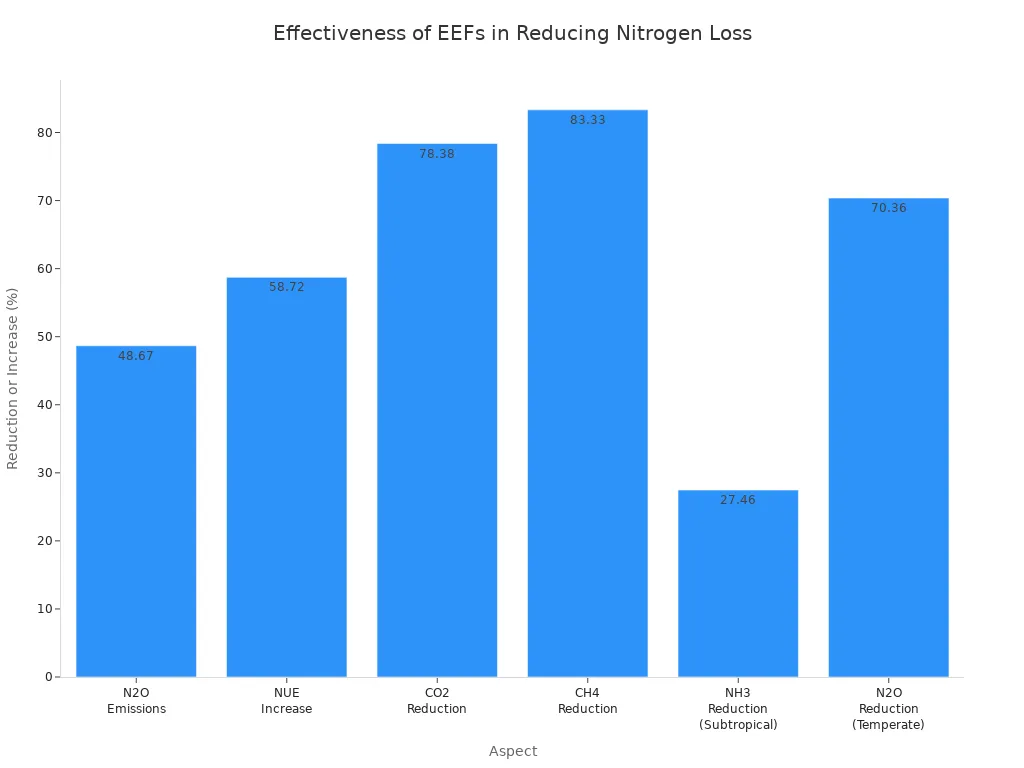
The chart above shows these products can cut nitrous oxide almost in half. They also help plants use more nitrogen, almost 60% better. These products lower ammonia and greenhouse gases. They are a smart choice for farms that want to protect nature.
Regulations
Governments and companies make rules to keep nature safe from fertilizer pollution. Many places use the 4R plan: right source, right rate, right time, and right place. This helps farmers pick the best fertilizer and use it when crops need it. Some places make farmers use inhibitors or slow-release products. Others limit fertilizer near water or during rain. These rules help farmers use better ways and lower urea’s harm to air, water, and soil.
Farmers who follow these rules help nature, save money, and grow better crops.
Future Outlook
Sustainability
Resource Use
The world needs to use resources better when making urea fertilizer. Companies now try to save energy and water in their factories. They use special catalysts to make chemical reactions faster and cleaner. Digital tools and machines help use less water and fewer raw materials. Many companies are starting to use solar and wind power. This helps lower greenhouse gas emissions and makes urea less harmful to the planet. Some factories recycle water and byproducts in closed systems. This makes the process even more earth-friendly.
Companies that use these new ways get a big advantage. They save money over time and follow strict environmental rules. This helps them stay strong in the global urea fertilizer market.
Environmental Pressures
Caring for the environment is important for urea’s future. Nitrogen runoff from fertilizer can pollute rivers and lakes. Making urea also lets out greenhouse gases that warm the earth. Governments now make strict rules for using fertilizer. These rules make companies use better and safer methods. The price of natural gas can change fast and affect costs. Producers must change quickly to keep up with these things.
Main problems include:
Nitrogen runoff that makes water unsafe
Nitrous oxide emissions, which are strong greenhouse gases
Needing to grow food while protecting nature
A study in Sub-Saharan Africa showed bio-fertilizers helped the soil. Yields went up by 25%, and costs dropped by 20%. This shows that green fertilizer can work, but high prices and little knowledge are still problems.
Innovation
New Technologies
New ideas are shaping the future of urea. Companies are finding ways to make urea with less pollution. They use better catalysts to save energy and work faster. Some scientists look for catalysts that work at lower heat and pressure. Precision agriculture tools like GPS and soil sensors help farmers use fertilizer only where it is needed. This cuts waste and keeps nutrients in the soil. Slow-release urea gives plants nitrogen over time, so crops grow better and there is less pollution. Digital tools like data analytics and machine learning help factories make less waste and work smarter.
Cleaner ways to make urea
Better catalysts for more efficient factories
Precision agriculture for using fertilizer in the right spot
Slow-release and controlled-release urea
Digital tools for smarter and less wasteful production
Alternatives
New types of fertilizer are being made. Electrochemical ammonia uses electricity to make ammonia without CO2. Plasma-catalysis and photochemical ammonia use new ways that need less heat and pressure. These methods are cleaner but still have some problems to fix. Biological ammonia fertilizers use microbes to add nitrogen to the soil. This is good for organic farms and uses less energy. Some companies put coatings or inhibitors on urea to stop nitrogen loss. Ammonium nitrate-based fertilizers and urea ammonium nitrate (UAN) are other choices, each with their own good and bad points.
The future of fertilizer depends on using these new ideas. Companies that lead in technology will help make farming more earth-friendly.
Urea fertilizer is the top choice around the world. It gives more nitrogen than other fertilizers and saves money. Farmers and experts like urea because it helps crops grow better. It works well in many kinds of soil and with many crops.
Urea has up to three times more nitrogen than others. This means farmers spend less and get more from their fertilizer.
Urea is easy to use for both small farms and big companies. Governments help make it easy to get.
New ideas, like coated urea and smart farming, help protect nature and make farming better.
🌱 The future is hopeful as new tools and earth-friendly ways help farmers and the planet.
FAQ
What makes urea fertilizer the top choice for farmers?
Urea has the most nitrogen for crops. Farmers get bigger harvests and spend less money. Urea works well for many kinds of crops and soils. It helps feed more people around the world. Picking urea gives better results and makes farms stronger.
Is urea safe for all types of crops?
Yes, urea is good for most crops like rice, wheat, corn, and vegetables. Farmers use it on both small and big fields. Urea helps plants grow healthy and gives strong harvests.
How should farmers apply urea for best results?
Farmers should spread urea evenly on the field. They need to water it soon after putting it down. Using inhibitors or adding urea before rain keeps nitrogen in the soil. Good timing helps crops grow and stops waste.
Does urea harm the environment?
Urea can cause nitrogen loss and pollution if not used right. Farmers who use inhibitors and follow good steps protect soil and water. Using special products helps the earth.
Why is urea more affordable than other fertilizers?
Urea needs less raw material to give more nitrogen. Big factories and easy shipping make it cheaper. Farmers get more for their money. Urea’s price makes it a smart choice.
Can urea be used in organic farming?
No, urea is made in factories and is not natural. Organic farms use things like compost or manure. For regular farms, urea is still the best way to add nitrogen.
How does urea help with global food security?
Urea helps farmers grow more food on the same land. This means more food for more people. Governments help farmers use urea to keep food supplies strong.
What are the latest innovations in urea fertilizer?
Companies now make coated urea and slow-release types. They also use digital tools for better use. These new ideas help farmers use less fertilizer, save money, and protect nature.
See Also
Forecasting The Growth Of Humic Acid Fertilizers By 2025
Exploring The Role Of Potassium Humate In Indian Farming
Comparing Humic Acid And Chemical Fertilizers For Sustainability
